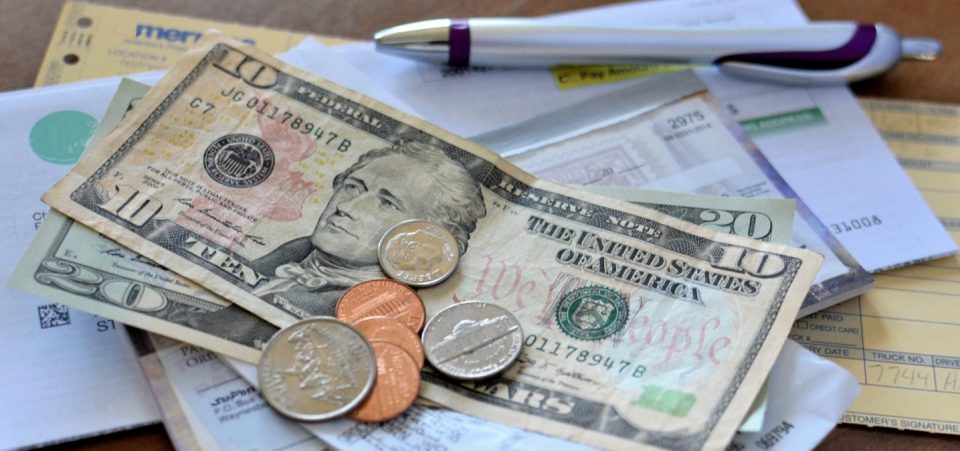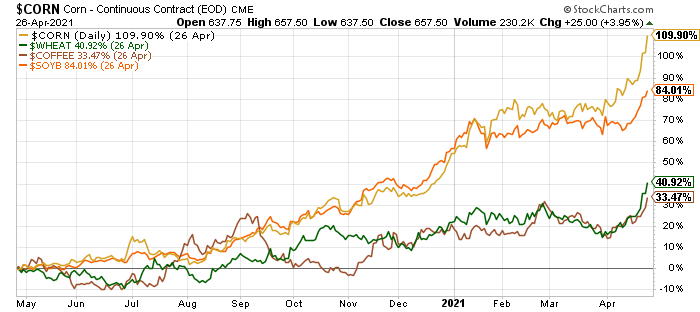Fed Says Don’t Worry About Inflation, But Should You Get Complacent?

Even Transitionary Inflation Could Cause a Lot of Pain
If you’ve been following the Federal Reserve over the past few months, you’d know that its stance on inflation has been very rigid. The Fed isn’t concerned about inflation in the U.S. economy, whatsoever. It has repeatedly said that if there’s any inflation in the near term, it would only be transitionary.
But should you, the investor, be complacent? Short answer: no. Even if the inflation is transitionary, it could bring a lot of pain.
You must pay attention to the prices of very basic things; they are currently soaring.
Consider the chart below. It plots the price performance of commodities like corn, coffee, wheat, and soybeans over the past year.
Notice something?
Corn prices, for example, have surged 109% over a year. Remember, corn is used in a lot of foods we eat. Will we be paying more money for food items? Coffee prices have surged by more than 30%. Will your morning coffee prices jump?

Chart courtesy of StockCharts.com
Here’s the thing: in the short term, we may not see these commodity-price increases show up in the food and beverage prices we pay. Businesses are somewhat hedged in the near term. However, one really has to wonder if the prices of basic products will remain high in the long term.
Mind you, the corn and coffee price increases mentioned above are just a few of many examples of prices of basic items jumping.
Take a look at the lumber market as well. It’s another place where things may be getting out of hand. Lumber prices currently stand at record-high levels, and it’s impacting everyone in the supply chain: retailers, wholesalers, homebuilders, and so on. It’s even impacting home prices.
How Long Will Transitionary Inflation Last?
Dear reader, I really buy the argument that the Federal Reserve is putting forward that the inflation we see now is transitionary and won’t be there for the long term.
Here’s my question, though: How long will this “transitionary” period be, and what kind of inflation figures will we get during this time?
At the end of the day, inflation hurts consumers. If people go out to do their groceries and find themselves paying higher prices for things they need, what will they do?
If this transitionary period of higher-than-normal inflation is for a few quarters, that could have a big economic impact. Consumers are already struggling; their wages are nowhere close to keeping pace with inflation. So, if consumers get squeezed in the next few quarters, wouldn’t that be bad news for the U.S. economy?
I continue to watch this situation unfold.
There are tons of arguments, but the economic data will tell us the reality eventually. At the moment, even the official figures suggest that inflation is running hot. Basic commodity prices soaring suggests that inflation could be higher in the coming months and quarters. Could something break in the midst of all this? Time will tell.
I’ll end with some food for thought: if in the near term, we get official inflation figures that are red hot, something around five percent, will the Federal Reserve be forced to do something? Will it suddenly hike interest rates to curb inflation?
Disclaimer: There is no magic formula to getting rich. Success in investment vehicles with the best prospects for price appreciation can only be achieved through proper and rigorous research and ...
more


